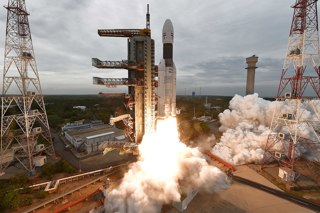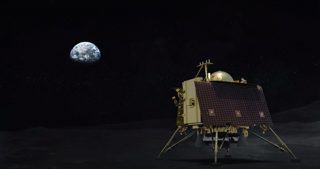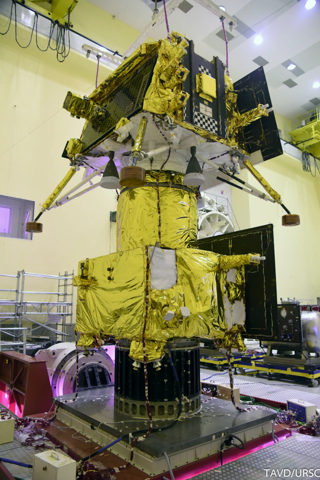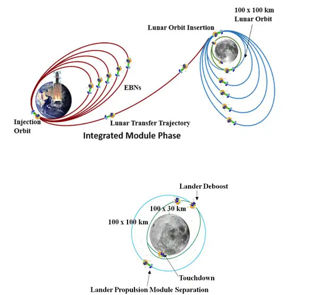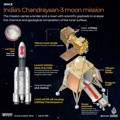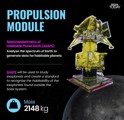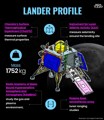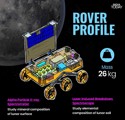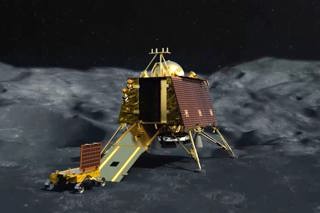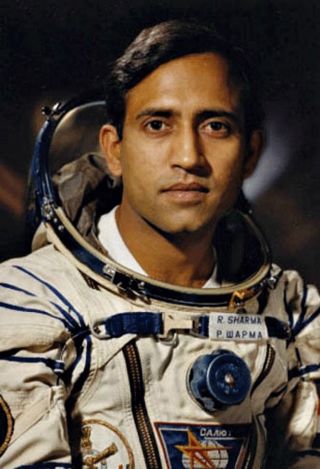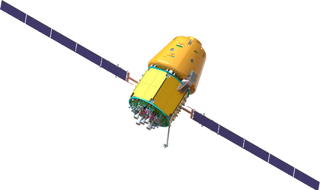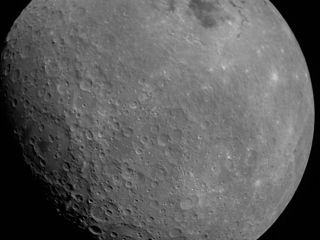
Chandrayaan-3: India’s first soft landing on the Moon?
- 13th Jul 2023
- Author: Ed Kellond-Turner
The third lunar mission in India's Chandrayaan Programme.
Following the part-failure of the Chandrayaan-2 lunar exploration mission by the Indian Space Research Organisation, ISRO, can India succeed in placing their first probe safely on the lunar surface with Chandrayaan-3?
The Chandrayaan Programme
The Chandrayaan programme is named for the Hindu god of the Moon, continuing the use of mythological figures for lunar missions, such as China’s Chang’e landers and the USA’s Artemis programme, both being goddesses of the Moon in different mythologies.
The programme incorporates six planned missions to the Moon, two of which have already launched in 2008 and 2019. These missions are made up of a combination of orbiters, impactors, landers, and rovers. During the programme, ISRO will use their Chandrayaan spacecraft to explore the lunar surface.
They have already made great scientific discoveries using the Chandrayaan-1 orbiter and associated impactor in 2008, which found evidence for the widespread presence of water molecules in lunar soil near Shackleton crater at the lunar south pole. These results were of huge interest to NASA, who have targeted Shackleton crater for a future lunar base.
Though Chandrayaan-1 was unexpectedly lost after less than a year into its two-year mission, it was deemed a huge success, with 95% of the primary objectives being complete.
ISRO followed up Chandrayaan-1 with Chandrayaan-2 in 2019, which was the space agency’s first attempt to land on another celestial body. The mission consisted of an orbiter, which is still in operation today, and a lander, known as Vikram, after Vikram Sarabhai, who is widely regarded as the founder of the Indian space programme.
Vikram also carried the Pragyan rover, designed to explore the surrounding area. Unfortunately, the lander drifted from the expected trajectory when attempting to land, causing the craft to crash into the lunar surface.
Chandrayaan-3
Undeterred, ISRO is once again attempting a lunar landing with Chandrayaan-3, which launched on 14 July 2023. The spacecraft will cruise to lunar space, where it will enter a parking orbit before attempting to land around one and a half months after launch. Chandrayaan-3 has a dedicated orbiter for communications with Earth but no scientific sensors for lunar study onboard, like Chandrayaan-2. This propulsion module will however carry a Spectro-polarimetry of Habitable Planet Earth (SHAPE) payload to study the spectral and polarimetric (the degree of polarisation of light reflected) measurements of Earth from the lunar orbit.
ISRO have been working hard to ensure previous failures are not repeated, including improving the structure of the lander and adding multiple software contingency systems. If all goes to plan, the Chandrayaan lander will touch down softly at the lunar south pole before unloading a small rover. The mission will last for one lunar day, or about 14 Earth days. After this, the lander and rover will be plunged into the freezing darkness of the lunar night, ending the mission.
Unpacking the spacecraft and payloads
A look at the impressive package ISRO has launched to our lunar neighbour.
Mission Objectives
Chandrayaan-3 is as much a demonstration of ISRO’s capabilities as a scientific mission. If successful, Chandrayaan-3 will prove India’s ability to soft land on the lunar surface and operate a lunar rover. It would make then only the fourth country to successfully land on the Moon with a spacecraft behind Russia, the United States and China.
The seven scientific instruments carried by the lander and rover will complete several mission objectives, including:
- Testing the elemental composition of lunar soil.
- Measuring the near surface plasma density and how it changes over time.
- Measuring the thermal properties of the lunar surface near polar regions.
- Measuring the seismic activity around the landing site to deduce the internal structure of the lunar crust and mantle.
I’m sure other space agencies will be watching this mission closely, both for the scientific gain it offers at an area of interest for future lunar bases, but also to see if ISRO can be relied on in the future to carry foreign equipment to the Moon.
India’s Place in Space
India is quickly becoming one of the big spaceflight superpowers, with a strong history and exciting future ambitions.
India’s first venture into space was the Aryabhata satellite in 1975, launched as part of the Soviet Union’s Interkosmos program. ISRO also utilised the Interkosmos program to send the first and, as of June 2023, only Indian citizen into space. Rakesh Sharma flew to the Salyut 7 space station, staying in orbit for almost eight days. When asked how India looked from space, he replied “the best in the world”.
From there, ISRO developed a fleet of their own launch vehicles along with numerous satellites, and not just for Earth orbit. As well as the Chandrayaan missions to the Moon, ISRO became the fourth space agency to successfully achieve Mars orbit with the Mars Orbiter Mission, or Mangalyaan, making India the first nation to achieve Martian orbit on their first try.
India has no intentions of slowing down their space prospects. In the near future they plan to return to Mars, orbit Venus, and become the fourth country to independently send humans to space using the Gaganyaan crew capsule currently under development. There are also intentions to create the ISRO Space Station, which rather confusingly is abbreviated to ISS!
Full image credits / references
(Banner image) The First Image Of The Moon Taken By Chandrayaan 2. Credit: ISRO
(1a) Chandrayaan 2 Lifting Off Aboard A GSLV Mk III. Credit: ISRO
(1b) Chandrayaan 2 On The Moon. Credit: ISRO
(2a) Chandrayaan 3 Integrated Module Going Through Dynamic Testing. Credit: ISRO
(2b) Chandrayaan 3 Flight Plan. Credit: ISRO
(3a) India's Chandrayan-3 Moon mission. Credit: Vani Gupta/IndiaToday
(3b) Chanrayaan-3 facts and figures. Credit: Vani Gupta/IndiaToday
(3c) Chandrayaan-3 propulsion module. Credit: Vani Gupta/IndiaToday
(3d) Chandrayaan-3 lander profile. Credit: Vani Gupta/IndiaToday
(3e) Chandrayaan-3 rover profile. Credit: Vani Gupta/IndiaToday
(4) Chandrayaan 3 Lander Deploying The Rover. Credit: ISRO
(5a) Rakesh Sharma Was The First Indian To Travel Into Space. Credit: Indiatimes
(5b) Render Of The Gaganyaan Crewed Spacecraft. Credit: ISRO

